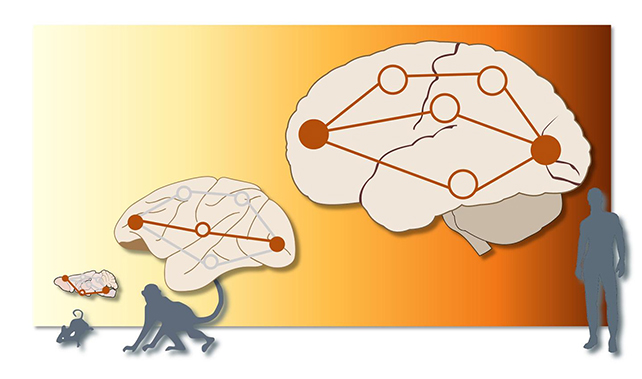
A recent study reveals that the flow of information in our brains differs from that in other animals, offering valuable insights into the evolution of our species. This unique pattern could provide significant lessons about the trajectory of human evolution.
A team led by researchers from the Swiss Federal Institute of Technology in Lausanne (EPFL) in Switzerland employed advanced data analysis techniques alongside functional magnetic resonance imaging (fMRI) scans to scrutinize brain activity in humans, mice, and macaques.
Rewrite the above lines for the blog, change the wording, use SEO-friendly wording, use simple but best English, do not change the meaning, do not summarize any line, and it is important that do not remove any HTML inline tags, especially anchor tags.
Upon scrutinizing the generated brain ‘traffic maps,’ the study uncovered a distinctive approach in the human brain. Unlike mice and macaque brains, which rely on single channels, the human brain employs multiple parallel pathways to transfer information between different regions.

What’s new in our study is the use of multimodal data in a single model combining two branches of mathematics: graph theory, which describes the polysynaptic roadmaps; and information theory, which maps information transmission (or traffic) via the roads,
says Alessandra Griffa, a biomedical engineer from EPFL.
The basic principle is that messages passed from a source to a target remain unchanged or are further degraded at each stop along the road, like the telephone game we played as children.
Using a different analogy, the flow of information within the brain is akin to traffic navigating a road with various stops. It appears that our brains are intricately designed to utilize multiple routes concurrently, ensuring the smooth transmission of signals to their intended destination.
Additionally, the investigators found that these parallel pathways are as distinct as fingerprints. Examining the specific patterns of information flow within a brain can differentiate between individual nervous systems.
Such parallel processing in human brains has been hypothesized, but never observed before at a whole-brain level,
says Griffa.
The impact of these multiple channels on thought processing and the reason for their existence, unlike in other animals, falls outside the purview of this study. Nevertheless, the researchers speculate that our larger brains have facilitated the development of more intricate patterns of connectivity.
The researchers propose that this unique feature could potentially enhance the resilience of the human brain. In the event of a blockage or damage to one channel, there is a possibility that information can be redirected through an alternative channel.
Looking ahead, this research has the potential to guide us in understanding how we could address damage resulting from brain injuries or potentially safeguard against the onset of conditions, such as dementia.
We could hypothesize that these parallel information streams allow for multiple representations of reality, and the ability to perform abstract functions specific to humans,
says Griffa.
We looked at how information travels, so an interesting next step would be to model more complex processes to study how information is combined and processed in the brain to create something new.
The findings of the study have been officially published in Nature Communications.





